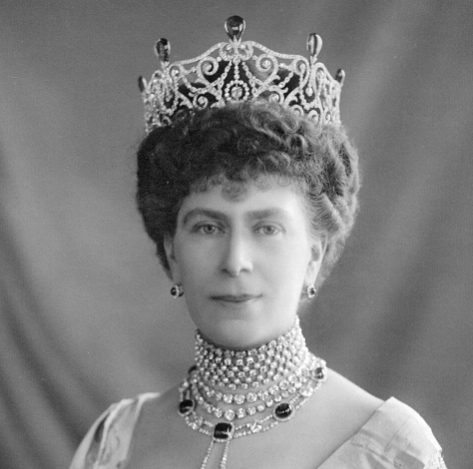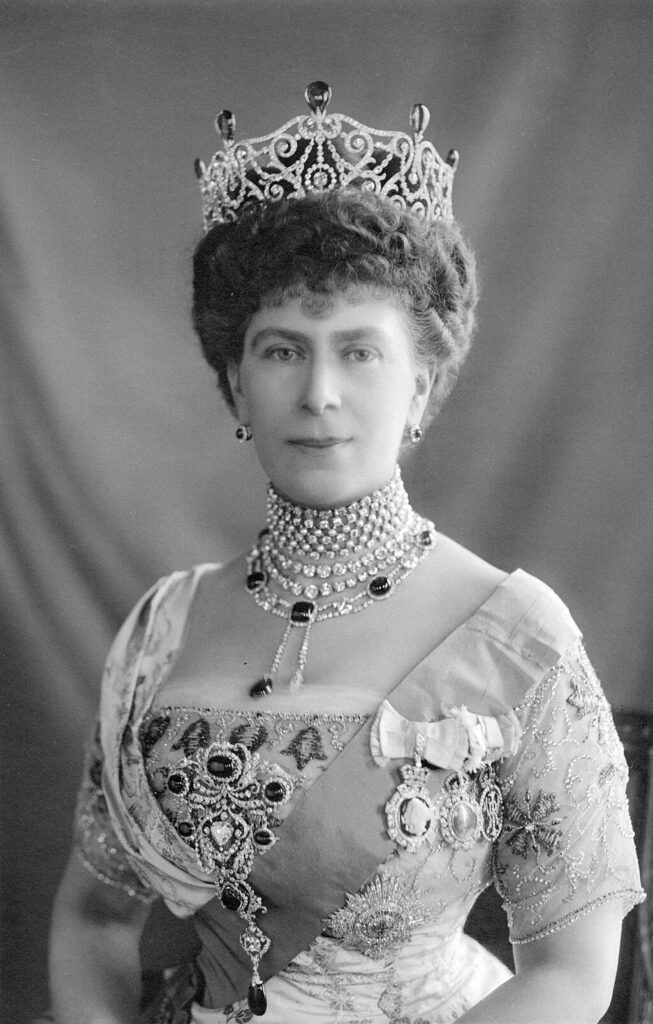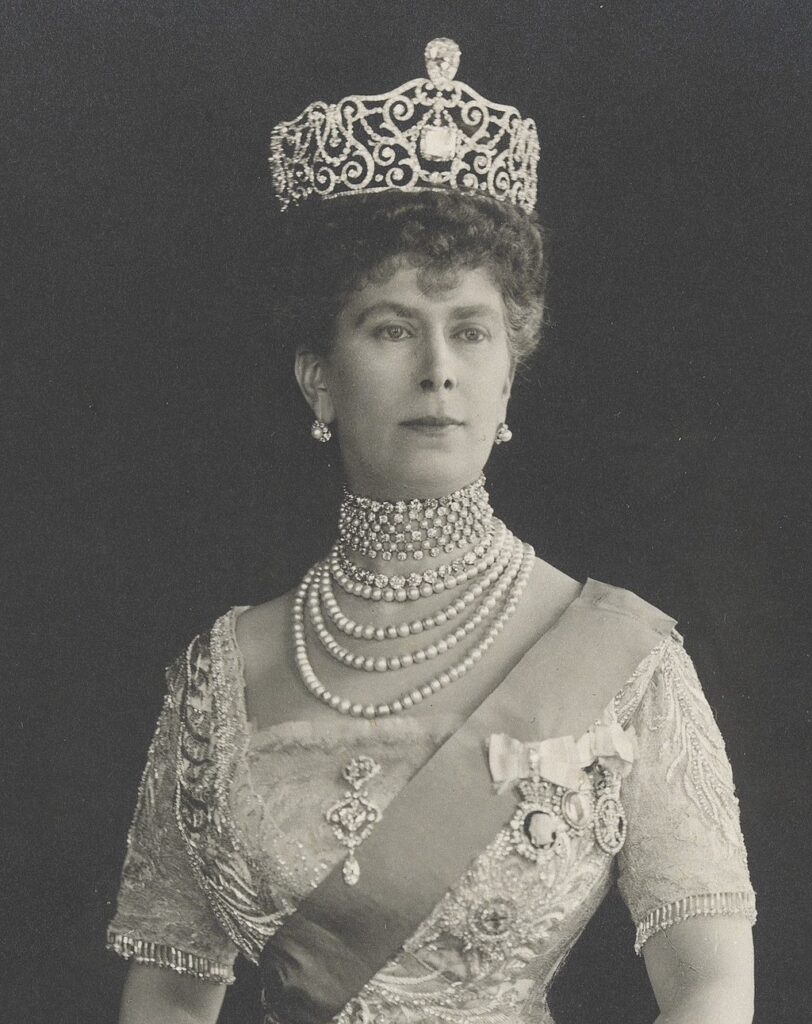
The Queen Mother owned several tiaras in her own right, including several gifts from her husband, King George VI. She also had access to many more tiaras in the Royal Collection while queen. One of her most impressive but rare picks never actually belonged to her – the Delhi Durbar Tiara.
Queen Mary asked Garrard & Co to create a new tiara for the 1911 Durbar in India. A Durbar was a large public celebration held to mark the coronation of a new Emperor or Empress of India, and King George and Queen Mary were the only British royals to attend their own Durbar.
Queen Mary chooses a tiara instead of a crown
The Crown Jewels must remain in the UK and so King George had a new crown created and Queen Mary opted for a tiara.
The tall tiara forms a circlet and features diamonds set in both platinum and gold, with designs of lyres, scrolls, and festoons incorporated around the diadem.

(W. & D. Downey, Public domain, via Wikimedia Commons)
It originally was set with ten of the impressive Cambridge emeralds, but Queen Mary later chose to remove them and went on to use them for the Vladimir Tiara.
A crown like tiara
The Delhi Durbar tiara is truly impressive and it became a great favourite of Queen Mary who also kept changing the overall look of the diadem as she wore it for a series of portraits in the later part of her husband’s reign. She even added two of the Cullinan diamonds to the tiara at one point.

(John Thomson, CC BY 4.0, via Wikimedia Commons)
While Queen Mary continued to wear the tiara frequently, she loaned it permanently to her daughter in law, Queen Elizabeth, in 1947 for the State Visit to South Africa. Queen Elizabeth, later The Queen Mother, wore it for the State Opening of Parliament of Cape Town as well.
Queen Elizabeth II inherited the tiara and in 2005 loaned it to the then-Duchess of Cornwall for a very important moment. This became the first tiara worn by Queen Camilla as a member of the Royal Family. She chose it for the State Banquet in the autumn of 2005, her first tiara appearance after her marriage to King Charles III.
It was included in the 2012 Royal Collection Trust exhibition “Diamonds: A Jubilee Celebration”.

